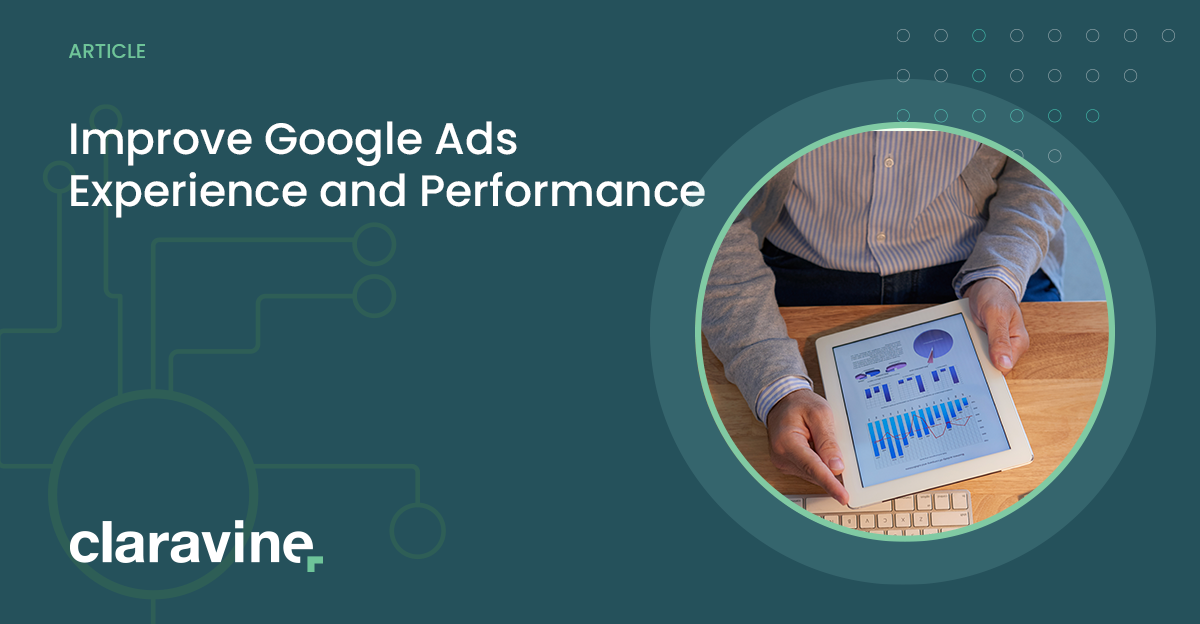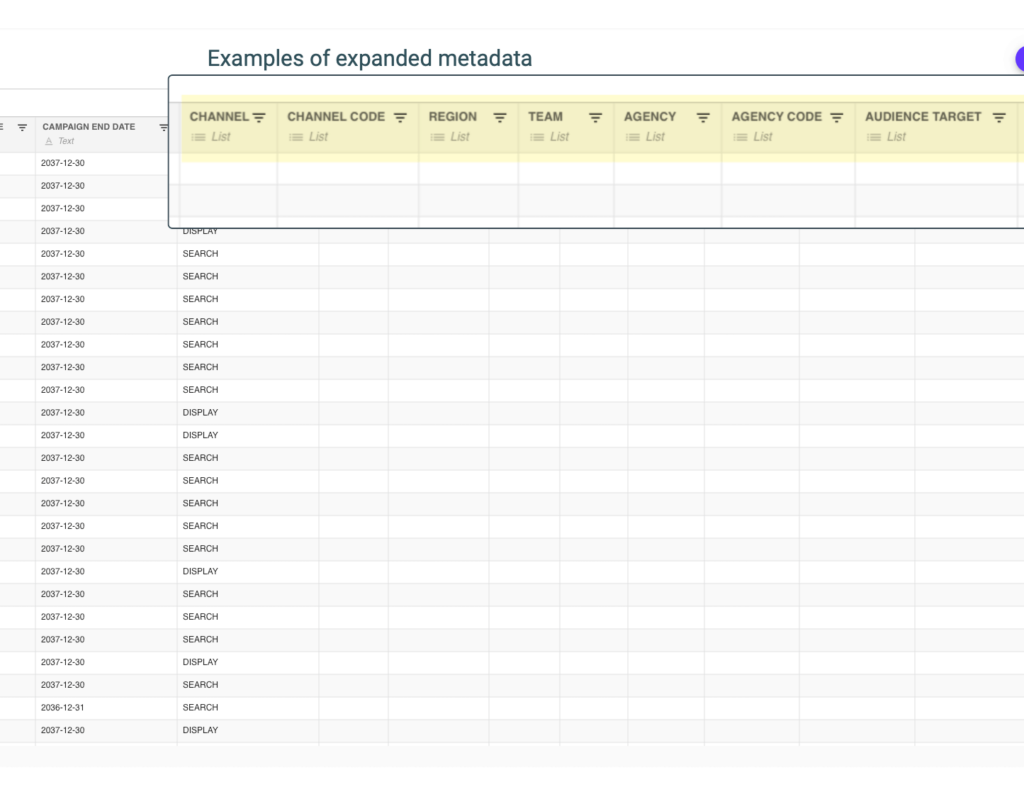Streamline Google Ads Campaigns, Ad Groups and Ads data management

Imagine a world where you actually are capping out the number of campaigns (10k) and ad groups (20k) available in Google Ads (that combo goes up to 200 million ad groups, btw).
While that seems nuts, large enterprises are definitely managing large volumes of campaigns, ad groups and ads. I asked someone who runs Google Ads for a lot of Fortune 500 companies and the average was between 200-300 campaigns and 5K+ in Ad Groups. It really just depends on the industry e.g. ecommerce vs. automotive.
Let’s also assume you have inherited historical campaigns/ad groups from previous internal users, past agencies + all the current users and agencies inside your account. By the way, I recently heard of an enterprise company having 100 ACCOUNTS (I know, how?!)
Given all of these permutations over time, how on earth can you manage and make sense of these at scale? Well, here are some suggestions for mass clean-up and management.
What’s in an Ad Group?
For starters, I like to think about Ad Groups, especially how they are named. It is unlikely that there were any rules or standards for naming those ad groups over time so most users put in something that just makes sense to them – they aren’t thinking about how that name might need to be understood by other users (current or future) let alone how that name might appear in your downstream reporting.
Wouldn’t it be better if all the ad groups had some type of uniformity like: “Topic/Product – Audience – Targeting Type – Bid Type – Campaign Type”. That might be overkill, it might be just enough or you might even want more than that – it’s up to your organization and the visibility you’d prefer. But I can tell you, if you had the above available inline when viewing your reports, you have a view of dimension at the first level without having to drilldown to secondary dimensions – makes reporting a whole lot faster without customization or cobbling.
That’s all doable when you use The Data Standards Cloud and our Google Ads connector.
Our platform can help you map all the attributes you want (beyond what Google Ads allows) and concatenate the attributes you want into a friendlier Ad Group name – a name you can read in analytics that will give you a lot of the details needed to understand performance at a deeper level. Once you build the template in our platform that builds this metadata and Ad Group name creation, you can export and import right back into Google Ads (just make sure you have the Ad Group ID in your export file for correct mapping).
And you might be worried or wondering, but now I’ll have different names in my reporting, e.g. Google Analytics. Fret not, It retroactively updates all the Ad Group names historical so you don’t have an old name and new name in your reporting.
See the integration in action.
Are tracking templates a mystery (or underused)?
Wouldn’t it also be impressive if you could audit and update your tracking templates at the campaign, ad group or ad level? For example, what if you needed to add a variable to your tracking templates across all (or subset) of your ad groups? I don’t know that Google Ads Editor does this very well for users – selecting a set of Ad Groups usually gives you the value letting you know they are not all uniform.
Instead, pull in all the tracking templates into The Data Standards Cloud for the component you want to fix (i.e. Campaigns, Ad Groups, Ads) and find out where you have consistency and better yet, where you have inconsistent or missing tracking templates altogether. Then, build out your standardized tracking template and import it back into Google Ads and get “back on track” (get it? sorry).
Imagine more campaign level data
Google Ads gives you lots of data at the campaign level, even the ability to create custom fields:
However, there are limitations that deny you the ability to deepen your performance analysis. Those custom fields are limited to formulas on existing default data Google Ads stores. It would be more powerful if you could create custom values (or attributes) related to your campaign that extend beyond the abilities currently available in Google Ads.
Perhaps you want dimensions on the following for all of your campaigns:
- Team/agency managing the campaign
- Target audience or region(s)
- Customized conversion goal name
- A description of the the creative used within perhaps defined by emotions, text/image/video details
- Funnel stage (awareness, purchase, etc.)
- Deeper details on what the campaign is promoting, e.g. product line

Those are just some quick examples – I’m sure people who manage volumes of Google Ads Campaigns can come up with at least a half a dozen more details they would love to have about a campaign and made available in their analytics systems.
By using our connector to Google Ads, you can import core Campaign details and then build a bigger dataset of attributes. By attaching those attributes to the Campaign ID, you can then marry that additional metadata in your downstream analytics. Through an outbound integration to cloud storage and Google Analytics, send the deeper details as a file that can then be imported into your analytics system of choice, joined by the Campaign ID primary key. From there, analytics can use those additional details for more in-depth performance analysis.
Edit Ad content inline, in bulk
Managing thousands of ads in bulk is no easy task. If you take advantage of Google Ads Editor you have some greater control over mass changes but there are still missing features that make this inefficient and prone to error.
What if you could output all of your ads (headlines, descriptions, ad paths) into an interface that allows not only for bulk editing but has a rules engine that makes sure everything is accurate. Accuracy around brand standards, inclusion of key terms, character counts and more. Nothing gets pushed live in Google Ads without underlying governance running to make sure your ads are in compliance to your brand expectations.
This governance engine will also help you identify any ads and its details that are not currently in compliance, allowing for speedy bulk fixes.
This is possible in our platform, too. Every field you import into The Data Standards Cloud can have a rule to make sure you are inputting the correct data.
More Detail + Governance
There’s no doubt you can improve your overall Google Ads experience and performance with better naming, more metadata and rules to make sure everything is accurate (from tracking templates to brand guidelines around your ad copy and more). Hacked together spreadsheets and Google Ads own interface don’t give you this control.



